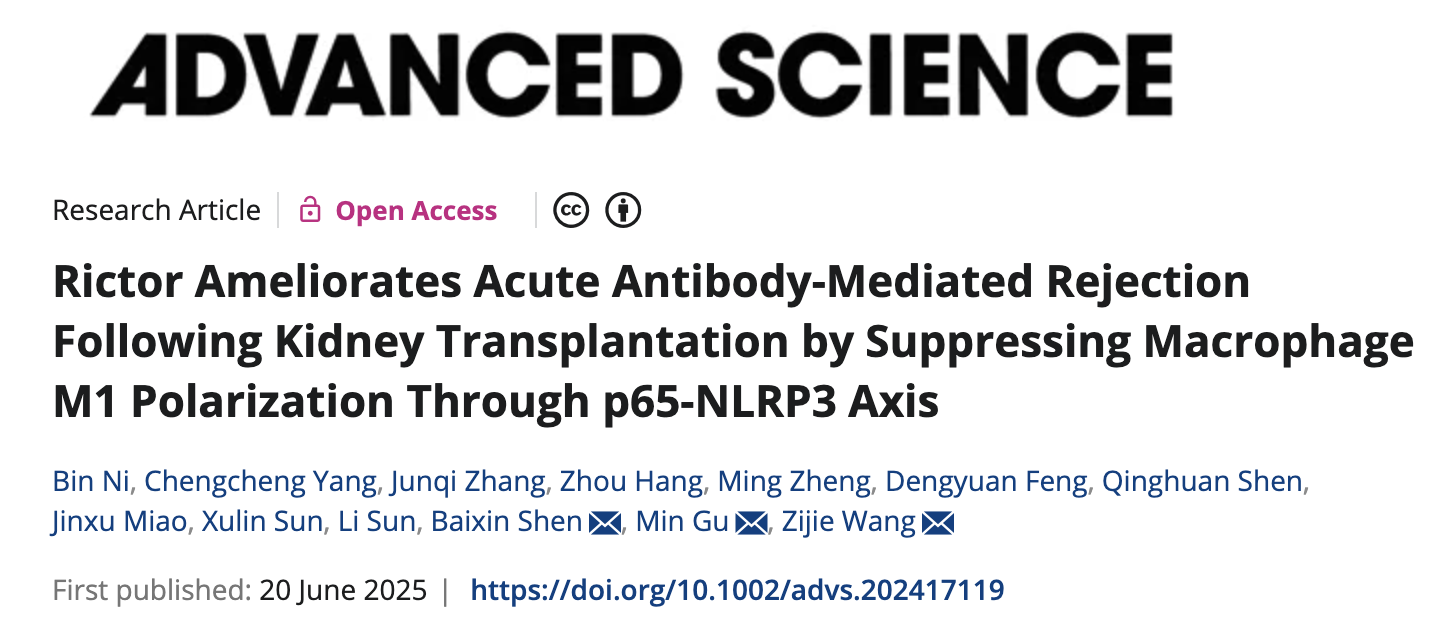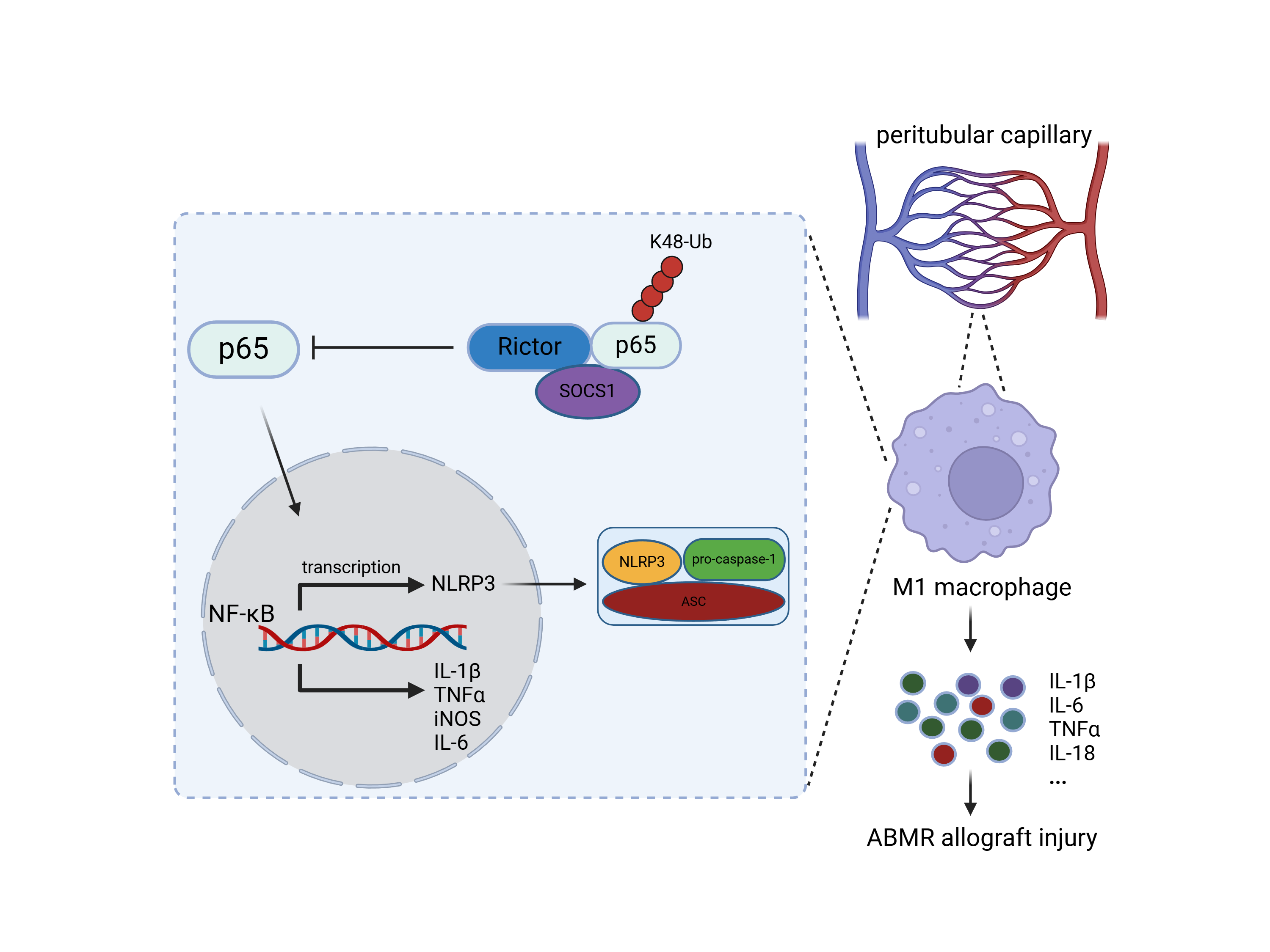A research team led by Professor Min Gu from the Second Affiliated Hospital of Nanjing Medical University has identified the protein Rictor as a key brake on antibody mediated rejection (ABMR) after kidney transplantation, offering a promising therapeutic strategy for preserving graft function. Published in Advanced Science under the title “Rictor Ameliorates Acute Antibody-Mediated Rejection Following Kidney Transplantation by Suppressing Macrophage M1 Polarization Through p65-NLRP3 Axis”, the work demonstrates that Rictor, acting through the mTORC2 pathway, redirects graft infiltrating macrophages away from a pro inflammatory M1 state. Analyses of human biopsy samples revealed that Rictor abundance rises in concert with M1 skewed macrophages in ABMR kidneys, and macrophage specific deletion of Rictor in a mouse transplant model intensified tissue injury and shortened graft survival.

Kidney transplantation effectively prolongs the survival and improves the quality of life of patients with end-stage kidney disease. Because ABMR remains the principal obstacle to long term success in kidney transplantation, and its incidence climbs with each passing year: the discovery of an endogenous pathway that can restrain the very macrophages most responsible for graft loss holds substantial clinical promise. “By pinpointing Rictor as a master switch that keeps macrophages from turning destructive, we open the door to cell based or pharmacological therapies that may prolong the life of transplanted kidneys,” said lead author Professor Gu Min . Mechanistic experiments conducted by the Professor Gu’s group further showed that Rictor elevates the E3 ubiquitin ligase SOCS1, which tags the NF κB subunit p65 for K48 linked ubiquitination and degradation, thereby damping the p65 NLRP3 inflammasome cascade that otherwise drives destructive inflammation. mTORC2 modulators and SOCS1 agonists already under exploration for other inflammatory diseases could be rapidly repurposed to translate these findings into the transplant clinic.

The paper was authored by Dr. Bin Ni (first author) and co- corresponding authors Professor Gu Min , Associate Professor Shen Baixin and Wang Zijie of NMU’s Department of Urology, Second Affiliated Hospital. The research was supported by the National Natural Science Foundation of China.
(Drafted by Prof. Gu Min’s research group; Reviewed by Shen Baixin & Wang Jieyun; Translation revised by Dr. Wu Wenbo)



